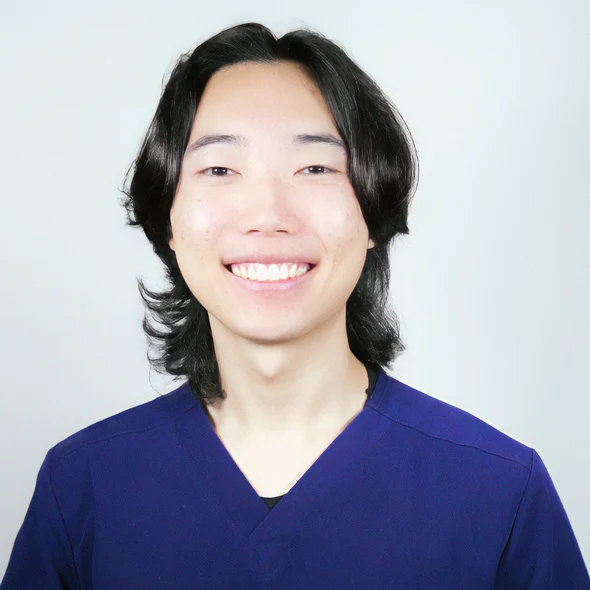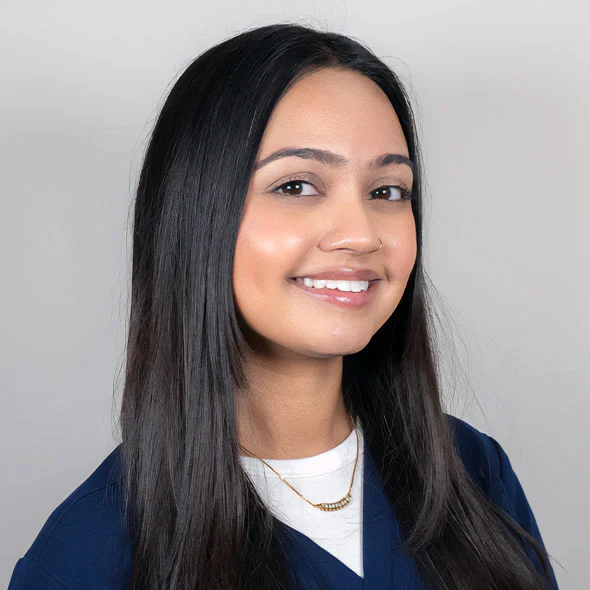[vc_row full_width=”stretch_row” content_placement=”bottom” presentation=”1″ px_parallax=”0″ px_gradient=”0″ css=”.vc_custom_1626968624674{margin-bottom: 0px !important;background-image: url(http://norcalbrain.com/staging/7764/newstaging/wp-content/uploads/2021/07/presentation-adhd-3.jpg?id=1769) !important;background-position: center !important;background-repeat: no-repeat !important;background-size: cover !important;}”][vc_column][/vc_column][/vc_row][vc_row full_width=”stretch_row” presentation=”0″ px_parallax=”0″ px_gradient=”0″ css=”.vc_custom_1621128225798{background: #ececec url(http://norcalbrain.com/staging/7764/newstaging/wp-content/uploads/2021/05/hexagon-1.png?id=475) !important;}” el_class=”bg-top-right”][vc_column width=”5/12″ el_class=”negative-columns shadow” css=”.vc_custom_1621092578264{background-color: #ffffff !important;}”][vc_custom_heading text=”Patient Review” font_container=”tag:h2|text_align:center” use_theme_fonts=”yes” el_class=”clear-spacing”][vc_column_text css=”.vc_custom_1626766156806{margin-bottom: 45px !important;}”]
I have seen Dr. Minh for 2 years for both ADHD and scoliosis chiropractic work. He knows so much about so many things and is always eager to share his knowledge with you…bring your “This weird thing keeps happening” questions and he’ll probably have some insight into why it is happening and if not, he’ll do research and let you know. I am constantly learning more about how my body and brain work from him. He spends as long as it takes to ensure you leave feeling better. He is truly the best doctor in terms of care and knowledge that I have experienced.
– Rebecca W.
[/vc_column_text][mybtn label=”Book a Consult” href=”http://norcalbrain.com/staging/7764/newstaging/get-in-touch/” alignment=”aligncenter” background_hover=”#e8e8e8″][vc_separator color=”custom” accent_color=”#e6e6e6″ css=”.vc_custom_1621093043594{margin-top: 50px !important;margin-bottom: 0px !important;}”][vc_column_text css=”.vc_custom_1623200586880{margin-top: 40px !important;margin-bottom: 40px !important;}” el_class=”aligncenter”]
[/vc_column_text][vc_separator color=”custom” accent_color=”#e6e6e6″ css=”.vc_custom_1621129117787{margin-bottom: 40px !important;}”][vc_custom_heading text=”Treatment” font_container=”tag:h2|text_align:center” use_theme_fonts=”yes” el_class=”underline” link=”url:%23treatment|||”][/vc_column][vc_column width=”7/12″][vc_empty_space height=”100px”][vc_custom_heading text=”ADHD” font_container=”tag:h1|font_size:35|text_align:left” use_theme_fonts=”yes” el_class=”h1 font-light”][vc_column_text css=”.vc_custom_1621946155358{margin-bottom: 0px !important;}”]ADHD is one of the most common neurodevelopmental disorders of childhood. It is commonly first diagnosed in early childhood and has the possibility of lasting up to adulthood. About 6.4 million children in America between the ages of 5-16 have been diagnosed with Attention Deficit Hyperactive Disorder.
Children with ADHD often display significant trouble when it comes to paying attention, holding back impulsive behaviors, and/or may be overly active. Children normally show some trouble focusing and behaving at one time or another, however when it comes to children with ADHD, they do not grow out of these behaviors.
The symptoms continue, can get worse and can cause the child to experience difficulty at school, with friends, or with family. They can also lead to the person developing low levels of self-esteem, low academic performances, poor social skills, antisocial like behavior, and substance abuse.[/vc_column_text][vc_empty_space height=”100px”][/vc_column][/vc_row][vc_row presentation=”0″ px_parallax=”0″ px_gradient=”0″ css=”.vc_custom_1625845343403{margin-bottom: 0px !important;}” el_class=”hidden-ipad-portrait”][vc_column][vc_empty_space height=”60px”][/vc_column][/vc_row][vc_row presentation=”0″ px_parallax=”0″ px_gradient=”0″ css=”.vc_custom_1627576633226{margin-bottom: 0px !important;}”][vc_column offset=”vc_hidden-lg vc_hidden-md”][vc_single_image image=”1983″ img_size=”full”][/vc_column][/vc_row][vc_row full_width=”stretch_row_content_no_spaces” content_placement=”bottom” presentation=”0″ px_parallax=”0″ px_gradient=”0″ css=”.vc_custom_1626627423408{margin-right: 0px !important;margin-left: 0px !important;background-image: url(http://norcalbrain.com/staging/7764/newstaging/wp-content/uploads/2021/07/ADHD-2.jpg?id=1640) !important;background-position: center !important;background-repeat: no-repeat !important;background-size: cover !important;}” el_id=”types” el_class=”custom-bg-pos”][vc_column width=”2/3″ el_class=”padding-box” css=”.vc_custom_1621094773785{margin-top: 100px !important;background-color: #ffffff !important;}”][vc_custom_heading text=”A CHILD WITH ADHD MAY SHOW THE FOLLOWING
TYPES OF SYMPTOMS” use_theme_fonts=”yes” el_class=”font-light clear-spacing style-3″][vc_row_inner css=”.vc_custom_1621946503851{margin-bottom: 0px !important;}”][vc_column_inner width=”1/3″][vc_column_text css=”.vc_custom_1632453576103{padding-right: 5% !important;}”]
- Daydream quite often
- Forget where items are placed
- Talk excessively
[/vc_column_text][/vc_column_inner][vc_column_inner width=”1/3″][vc_column_text css=”.vc_custom_1632453588945{padding-right: 5% !important;}”]
- Make many mistakes
- Take impulsive risks
[/vc_column_text][/vc_column_inner][vc_column_inner width=”1/3″][vc_column_text css=”.vc_custom_1632453600895{padding-right: 5% !important;}”]
- Cannot resist temptation
- Issues socializing normally with others.
[/vc_column_text][/vc_column_inner][/vc_row_inner][vc_row_inner css=”.vc_custom_1621356586505{margin-bottom: 15px !important;}”][vc_column_inner][vc_column_text]The most common treatment for ADHD is usually medication that is prescribed by a physician. However, more often than not these medications come with multiple side effects and cause people to search for alternative solutions. Research has also shown that the use of daily medication does not serve as a long term benefit for ADHD because it can hinder the child’s ability to develop specific types of learning and focus strategies.[/vc_column_text][/vc_column_inner][/vc_row_inner][/vc_column][vc_column width=”1/3″][/vc_column][/vc_row][vc_row full_width=”stretch_row_content” equal_height=”yes” presentation=”0″ px_parallax=”0″ px_gradient=”0″ el_id=”treatment” css=”.vc_custom_1621130519883{margin-bottom: 16px !important;}”][vc_column width=”1/3″ css=”.vc_custom_1626881320016{background-image: url(http://norcalbrain.com/staging/7764/newstaging/wp-content/uploads/2021/07/adhd-1.jpg?id=1756) !important;background-position: center !important;background-repeat: no-repeat !important;background-size: cover !important;}”][/vc_column][vc_column width=”1/3″ css=”.vc_custom_1621095513963{background-color: #ececec !important;}”][vc_column_text css=”.vc_custom_1623160582172{margin-bottom: 0px !important;}”]
ADHD
Equipment and Technology for Evaluation & Diagnosis
- QEEG brain map testing: By taking a look brain waves, we can get a picture of how the entire brain is performing, whether some areas are overactive or underactive
- Neurocognitive tests: Consisting of several traditional neuropsychological tests, we can measure the child’s memory, executive function, critical thinking and more.
- Videonystagmography eye recording testing: Most children with ADHD have problems with visual tracking and other eye movements. We can measure and specifically see if these deficits are contributing to their symptoms.
- Computerized dynamic posturography (balance testing): Balance is an important sensory skill. Individuals with sensory processing issues can tend to have balance problems
- Competent neurological and physical examination: We want to measure and assess the overall functional state of the brain.
- Comprehensive lab testing: Individuals with ADHD often have food sensitivities, nutrient deficiencies, and gastrointestinal issues that are contributing to their symptoms.
By putting all of these tests together, our doctors are able to pin point any functional deficiencies that may be at the root of the ADHD symptoms.[/vc_column_text][/vc_column][vc_column width=”1/3″ css=”.vc_custom_1621130709949{margin-bottom: 0px !important;background-color: #ececec !important;}”][vc_column_text]
ADHD
Treatment
Here at NorCal Brain Center we offer a drug-free approach through neurorehabilitation therapy which targets and can directly improve focus, concentration, social skills, memory retainment, and/or behavioral problems.
Research has shown that connections in the brain are weaker in those who have ADHD, which in turn can lead to the signs and symptoms of ADHD. Each of our ADHD treatments are tailored to each individual patient. Our goal is to increase the strength and efficiency of these connections in the brain that are not working to their potential. This specific plan of action is how our doctors at Norcal Brain Center achieve remarkable results with our patients.
Treatment of ADHD can differ from person to person, depending on the cause of the problem. Some treatments we provide include Neurofeedback, visual rehabilitation, vestibular rehabilitation, sensory training, balance training, and more.[/vc_column_text][/vc_column][/vc_row][vc_row presentation=”0″ px_parallax=”0″ px_gradient=”0″ el_id=”neurodevelopmental-disorders”][vc_column][vc_empty_space height=”100px” el_class=”hidden-ipad”][vc_custom_heading text=”NEURODEVELOPMENTAL DISORDERS RELATED SYMPTOMS” font_container=”tag:h3|text_align:center” use_theme_fonts=”yes” el_class=”font-light clear-spacing”][vc_row_inner][vc_column_inner width=”1/2″][vc_column_text css=”.vc_custom_1625845365028{margin-bottom: 0px !important;}”]
- Autism Spectrum Disorder (ASD)
- Attention Deficit Hyperactivity Disorder (ADHD)
- Auditory Processing Disorder
[/vc_column_text][/vc_column_inner][vc_column_inner width=”1/2″][vc_column_text css=”.vc_custom_1625845370496{margin-bottom: 0px !important;}”]
- Dyslexia
- Obsessive Compulsive Disorder (OCD)
- Oppositional Defiant Disorder (ODD)
[/vc_column_text][/vc_column_inner][/vc_row_inner][/vc_column][vc_column][/vc_column][/vc_row][vc_row full_width=”stretch_row” css=”.vc_custom_1620740117799{margin-bottom: 0px !important;padding-top: 50px !important;padding-bottom: 50px !important;background: #212121 url(http://norcalbrain.com/staging/7764/newstaging/wp-content/uploads/2021/05/treatment-bg.jpg?id=359) !important;background-position: center !important;background-repeat: no-repeat !important;background-size: cover !important;}”][vc_column][vc_column_text el_class=”text-light” css=”.vc_custom_1623333173302{margin-bottom: 0px !important;}”]
FIND OUT IF THE NORCAL BRAIN CENTER IS PERFECT FOR YOU.
View our treatments and book your free 30 minute in-person consult with one of our patient care coordinators.
[/vc_column_text][/vc_column][/vc_row]





